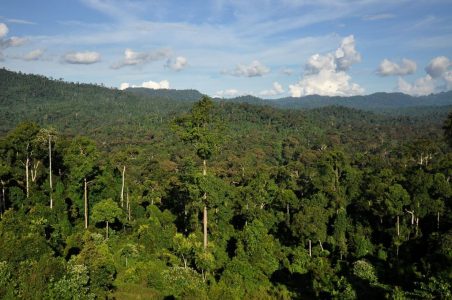- No products in the cart.
January 15, 2021
The Soils of Africa
Last week we had an article that covered what crops people grow in Africa. And this one will be going over the different areas of Africa and telling you about the soil there as well as some information about the area. Below this, you will find a map showing the significant climate areas of Africa, we will be talking about those areas in detail in this article, I hope we all can learn something new about these areas, what can be found growing there, and more!
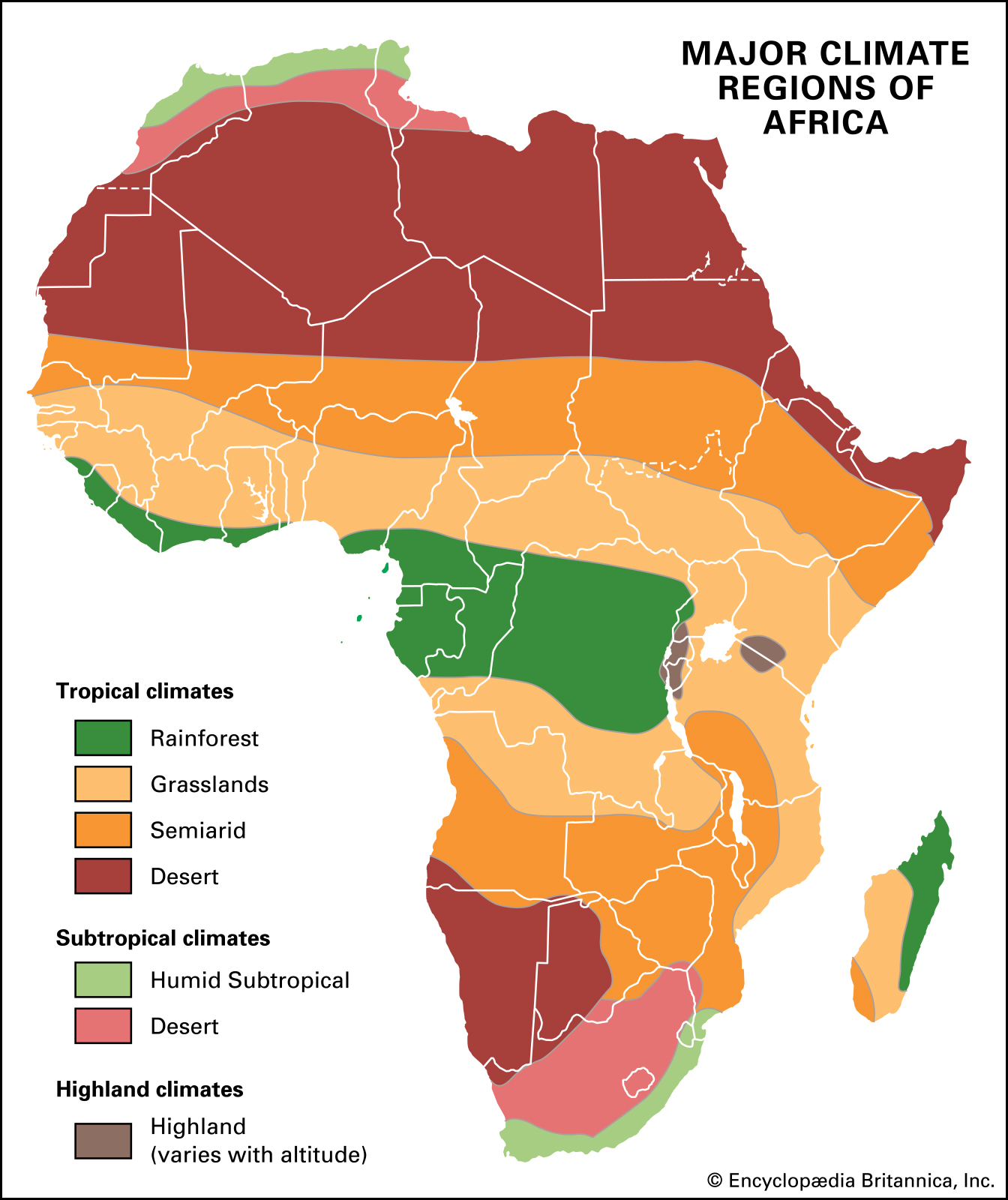
The Humid to Very Humid Forest Zone
This zone stretches from West to Central and East Africa where the rainfall exceeds a mean of 1500 mm a year, temperatures ranging between an average of 24-28oC with a growing period of more than 270 days. It covers the extreme southeastern parts of Guinea and Guinea Bissau; almost the whole of Congo, Equatorial Guinea, Gabon, Liberia, Sierra Leone, Zaire and the islands of the Comoros, Madeira, Reunion, Sao Tome and Principe, Seychelles, Cameroon, Central African Republic, Chad, the southern parts of Côte d’Ivoire, Ghana, Nigeria, Swaziland and Tanzania; the northern parts of Angola, Burundi, Mozambique and Zambia; the western parts of Malawi and Rwanda; the highlands of Ethiopia and Kenya; the central parts of Benin, Mauritius, Togo and Uganda; and finally, the east coastline of Madagascar. In places, relief gives an increased rainfall. For example, Mount Cameroon rises 4070 m above the neighboring warm sea and receives the full force of the humid air, thus giving the highest rainfall of the continent (averaging 10 000 mm annually at Debundja).
The major upland soils of this zone are Ferralsols, Nitosols, Acrisols, Arenosols, Cambisols, and Lithosols (FAO/Unesco 1977). Ferralsols, Nitosols, Acrisols, and Arenosols are very extensively developed and for the most part deeply weathered and gravelly, mostly acid to very acid in reaction but with a considerable amount of organic matter built up under natural conditions due to abundant leaf-fall and rapid decomposition. Inherent fertility status is quite high in uncultivated soils, initially allowing extensive cultivation of a wide range of cash and food crops including cocoa, coffee, oil palm, rubber, coconuts, citrus, cassava, maize, plantain, and cocoyam. After two to five cropping seasons, however, the nutrient levels are so reduced that farmers are obliged to abandon the cropped field for a newly cleared one. The result is that deforestation, which is already extensive, is still increasing due to population pressure. Other constraints that limit the ability of the deeply-weathered soils to produce high yields of climatically suitable crops are low cation-exchange capacity; weak retention of bases applied as fertilizers; fixation of phosphates; deficiencies of calcium, sulfur, and trace elements; leaching during the rainy season; and moderate to high risk of erosion.
Cambisols are, however, more recently formed and are inherently more fertile. In many places within the zone, however, hilly relief and stoniness limit their development. Lithosols, which are found in all the agroecological zones of Africa, is very shallow, occurring mainly on steep slopes often with exposed rock debris. These soils are at risk of very severe erosion. The major lowland soils comprising mainly of Gleysols and Fluvisols (FAO/Unesco 1977) are generally deep, non-gravelly, and of medium to heavy texture, making them ideally suitable for extensive rice, sugarcane, and vegetable production. They are subject to water-logging and flooding during the rainy season, so effective drainage control measures are needed to increase and sustain crop production. Other lowland soils that are quite extensively developed within the zone are Regosols and Histosols. Regosols, mainly developed in mantles of recent sand deposits, occur extensively along the coastal area of the zone and are widely utilized for the cultivation of coconut palms. Extensive areas are also cultivated with cassava, pineapples, and groundnuts.
Histosols (organic soils) occur extensively within large swampy areas located mainly on Côte d’Ivoire, Congo, Zaire, Zambia, Malawi, and Madagascar. The main constraints making the soils unsuitable for agricultural production are permanent water-logging, low bearing capacity, weak anchorage for plants, subsidence upon drainage, frequent micro-nutrient deficiencies, and irreversible shrinking of the organic material upon drying (Dudal 1980). Within the humid zones of Africa, several cultural management practices have been described and suggested by various workers as being effective in arresting soil degradation. For example, surface mulching, which apart from its erosion-preventing effects, creates a favorable microenvironment for better crop yields. Ridging has also been reported to cause a significant reduction in soil losses by erosion. Experiments by Fournier (1967) in Cote d’Ivoire show that ridging decreases erosion compared with flat planting and that the less steep the slope, the greater the advantageous effect of ridging.
The Humid to Sub-humid Wooded Savannah Zone
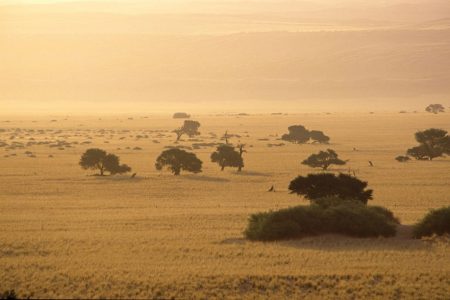
The humid to sub-humid wooded savannah zone covers areas between latitudes 5 to 15o North and 5 to 15o South in Central, Western and Southern Africa. Areas with one or two rainy seasons of varying lengths are located within this zone. The zone embraces the whole of Southern Chad, The Gambia, Southern Mali and Mozambique; almost all of Ethiopia and Tanzania; the southern parts of Burkina Faso, Senegal, and Sudan; the northern parts of Benin, Cameroon, Central African Republic, Côte d’Ivoire, Ghana, Guinea, Nigeria, Togo, Uganda, and Zambia; the southwestern parts of Kenya, Madagascar, Swaziland and Togo; the middle parts of Lesotho; western parts of Malawi; the extreme western border tip of Burundi; the eastern parts of South Africa; the southeast coastal areas of Benin, Ghana and Togo; and finally, limited areas of western and southern Angola.
The major soils of this zone are generally found on level to very gently undulating land interspersed with low-lying hills (Inselbergs) and with a rainfall of 650 to 1400 mm annually under predominantly grassland vegetation. The soils are identified as Luvisols, Ferralsols, Arenosols, Acrisols, Nitosols, Cambisols, and Lithosols. The upland soils are mostly well to moderately well-drained, gravelly with a light-textured matrix which in some areas overlies an iron pan developed in situ at shallow depth. The organic matter content and fertility status of the soils within the zone are, generally quite low compared with soils of the very humid to humid forest zone. These soils are used for the production of sorghum, maize, yam, millet, and various leguminous crops including groundnuts, beans, and cowpeas. In a higher country such as the East African highlands, the climate allows the cultivation of temperate cereals and other crops. Increased and sustained production, however, requires the application of fertilizers and the use of strict soil and water conservation measures.
The predominantly soil-related constraints which limit the ability of the major soils of the sub-humid wooded savannah zone to produce abundant crops are mainly moisture stress and sensitivity to erosion, particularly, under conditions of inadequate crop cover (Dudal 1980). Other restrictions are low cation exchange capacity, high base saturation, low phosphorus availability, micro-nutrient deficiencies, low aggregate stability, and surface sealing under the effect of rains resulting in increased runoff; root-zone limitation due to surface layers of plinthite, ferruginous concretion, and/or ironpan. Mulching and ridging are effective in controlling soil erosion. The lowland soils within the zone include Fluvisols, Gleysols, Vertisols and are mostly non-gravelly with a reasonably moderate to high inherent fertility status, making them more productive than their upland counterparts. Crops that can be successfully grown on these soils are rice, sugarcane, and vegetables. Where Vertisols and other lowland clayey soils are extensive, the main constraints are tillage difficulties, caused by stickiness when wet and hardness when dry, slow permeability, slow internal and external drainage, seasonal water-logging, flood risk, and in certain cases, salinity and alkalinity. Other lowland soils include Plinthic Luvisols, Regosols, and Histosols.
The Semi-humid Wooded to Semi-arid Savannah Zone
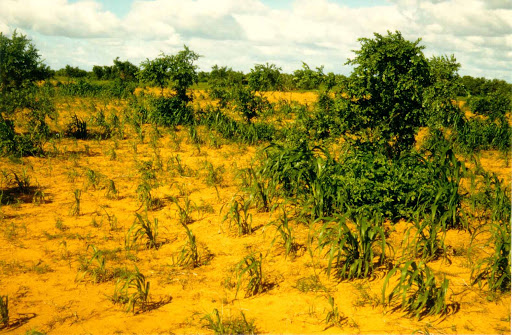 This zone covers areas between the sub-humid wooded savannah zone and the arid zone between latitudes 15o and 20o north and 15o to 25o south where the average rainfall ranges from 200 to 800 mm. It embraces the whole of Botswana, parts of Kenya, South Africa, and Zimbabwe; the southern parts of Mauritania, Mozambique, Niger, Somalia, and Zambia; the eastern parts of Ethiopia and Swaziland; the northern parts of Burkina Faso, Morocco, Namibia, and Senegal; the central parts of Chad, Mali, Sudan, and Tunisia; the extreme northern corners of Cameroon and Nigeria and limited western areas of Angola.
This zone covers areas between the sub-humid wooded savannah zone and the arid zone between latitudes 15o and 20o north and 15o to 25o south where the average rainfall ranges from 200 to 800 mm. It embraces the whole of Botswana, parts of Kenya, South Africa, and Zimbabwe; the southern parts of Mauritania, Mozambique, Niger, Somalia, and Zambia; the eastern parts of Ethiopia and Swaziland; the northern parts of Burkina Faso, Morocco, Namibia, and Senegal; the central parts of Chad, Mali, Sudan, and Tunisia; the extreme northern corners of Cameroon and Nigeria and limited western areas of Angola.
The major upland soils are generally found on level to near-level topography with isolated low-lying hills (Inselbergs) with mainly short grass savannah grading into a desert-like type of vegetation. Such soils are of high clay activity and mostly referred to in the FAO/Unesco (1977) Legend as Xerosols, Luvisols, Cambisols, Arenosols, Rendzinas, and Lithosols.
Xerosols occur extensively around the edges of the Sahara and the Kalahari deserts and in East Africa. They are for the most part shallow and difficult to use for crop production because of their extreme droughts and the stony and/or petrocalcic nature of the terrain. With the aid of irrigation, the deeper, medium-textured soils and associated alluvial soils can be used for the cultivation of cereals, especially within the South African Karroo. The best land use for such soils within the semi-arid parts of the zone is extensive livestock-raising which, if possible, should be managed in order to avoid degradation. In northern Nigeria, Swaziland, Zambia, and Zimbabwe, Luvisols are extensively used for groundnuts, sorghum, maize, and tobacco production. The major lowland soils which occur within the semi-arid zone are Fluvisols, Gleysols, Regosols, Planosols, Vertisols, Solonetz, and Solonchaks.
Planosols and the sodic and saline soils of Solonetz and Solonchaks are very difficult to develop agriculturally. They easily become waterlogged and are often flooded. With proper drainage and flood control measures, rice can be grown during the rainy season. Solonetz soils are extensively used for livestock-raising and in Chad, where they are only slightly sodic, they are used to grow wheat, millet, and maize. Solonchaks are, generally, undeveloped for agricultural production, as salinity renders them unfit for any type of cultivation. In Algeria, however, where furrow irrigation is employed to leach out the salts, cotton is being grown successfully grown on a large scale. The most important constraint which limits the ability of the soils of the zone to produce high yields of crops is moisture stress. Other restrictions include low fertility, salinity, and alkalinity, deficiencies of iron and zinc, as well as the constraints listed above for similar groups occurring in the sub-humid wooded savannah zone.
The Semi-arid to Arid Savannah Zone
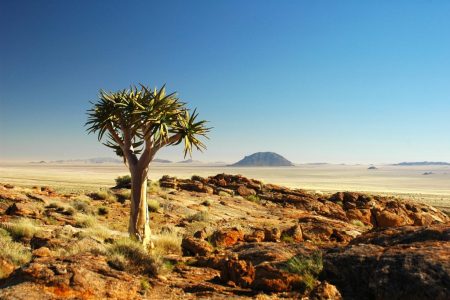
The arid savannah zone of Africa covers extensive areas north of latitude 20oN and south of 20oS where the average annual rainfall is less than 200 mm. The zone includes the vast Sahara desert and the Namibia, Kalahari, and Karroo deserts. It covers almost the whole of Libya, Somalia, and Algeria; the northern parts of Chad, Mauritania, Niger, Egypt, Mali, and Sudan; the southern parts of Morocco, Tunisia, and Botswana; the western areas of South Africa, Namibia, and Angola; and, finally, the extreme northern and eastern parts of Kenya.
The major soils of the zone are Yermosols, Xerosols, Lithosols, Regosols, Solonetz, and Solonchaks. Such soils are mainly sandy, rocky, and calcareous or siliceous, with salt and gypsum deposits occurring extensively. They are, generally, very low in inherent fertility and devoid of moisture and vegetation throughout the year. They are very susceptible to wind erosion. Traditionally, land use within the arid zone of Africa is predominantly nomadic livestock grazing. The major constraints within the zone affecting the survival of people, animals, and plants are adverse climatic conditions associated with rocky, stony, and sandy soils with extremely low inherent fertility.
The Mediterranean Zone
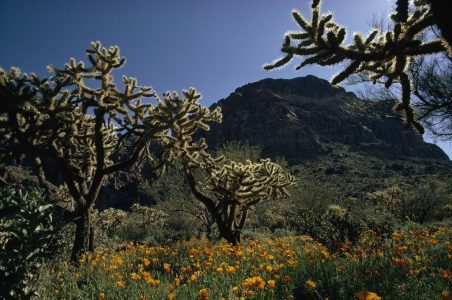
This zone embraces the extreme northern and southern parts of Africa, especially the coastal areas of Algeria, Egypt, Libya, Morocco, and Tunisia. Climatic conditions are quite different from tropical Africa. The main soils are, however, similar to those of the sub-humid wooded savannah, the semi-arid savannah, and the arid savannah zones. These are Rendzinas, Phaeozems, Cambisols, Kastanozems, Arenosols, and Solonchaks.
Rendzinas are very limited in Africa, occurring mainly within the semi-arid and Mediterranean zones. They are endowed with essential nutrients and have high humus content, but, generally, occur in hilly or moderately sloping areas. Their wide use for increased and sustained crop and livestock production is limited by topography. The development of intensive irrigated agriculture is only possible locally where the topography is favorable. Within the Mediterranean zone, hilly areas are used to grow olives, figs, and vines, with moderate sloping areas reserved for the production of wheat and barley. Phaeozems are also limited in distribution in Africa. They are excellent soils for both traditional and modern farming since they have practically no soil limitations. Seasonal drought may, however, limit their ability to produce high yields. For maximum production of crops and pasture, irrigation is needed during the dry season.
Kastanozems, which have been mapped in Morocco and Tunisia, generally occur over undulating terrain in association with Cambisols, Fluvisols, or Vertisols. They are, like Rendzinas, endowed with essential nutrients, and have high humus content. They are mainly devoted to the cultivation of wheat, barley, olives, figs, and vines as well as the extensive grazing of livestock. With appropriate irrigation, they are capable of producing large yields of a wide variety of climatically-suited fruits as well as cotton and vegetables. On the whole, soil-related constraints within the Mediterranean zone are similar to those of the semi-arid and arid zones and as such, will require similar ameliorative measures.

